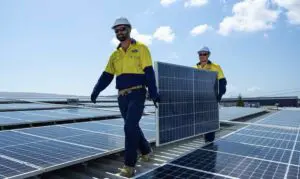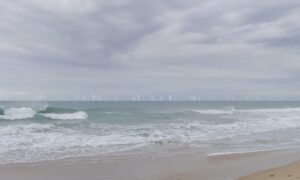One of the world’s most renowned architectural icons, France’s Eiffel Tower, is now generating its own renewable energy, after the addition to the monument of two on-site, vertical axis wind turbines and a small solar array.
The turbines – located above the Tower’s second level – were installed by Urban Green Energy International (UGE) as part of a renovation and upgrade to the first floor, and will produce 10,000kWh of electricity a year; enough to cater for the commercial energy needs of the newly revamped tourist attraction.
UGE says it designed and painted the wind energy system to match the tower, and to top off a series of other efficiency upgrades the Tower has undergone as as part of the City of Paris Climate Plan.

The turbines are “virtually silent”, according to the company, and were designed and located – at 120 meters above ground – to capture wind from any direction and maximise energy production.
The 10m² array of solar panels is mounted on the roof of a visitor pavilion at the site. Its output will meet abouf 50 per cent of the water heating needs of the Tower’s two pavilions.
LED lighting and high-performance heat pumps have also been installed to ensure a constantly balanced temperature. The two pavilions also have gained a rainwater recovery system that provides flushing water to the toilet facilities.
“We are proud that our advanced technology was chosen as the Tower commits to a more sustainable future,” said Nick Blitterswyk, CEO of UGE.
“When visitors from around the world see the wind turbines, we get one step closer to a world powered by clean and reliable renewable energy.”







